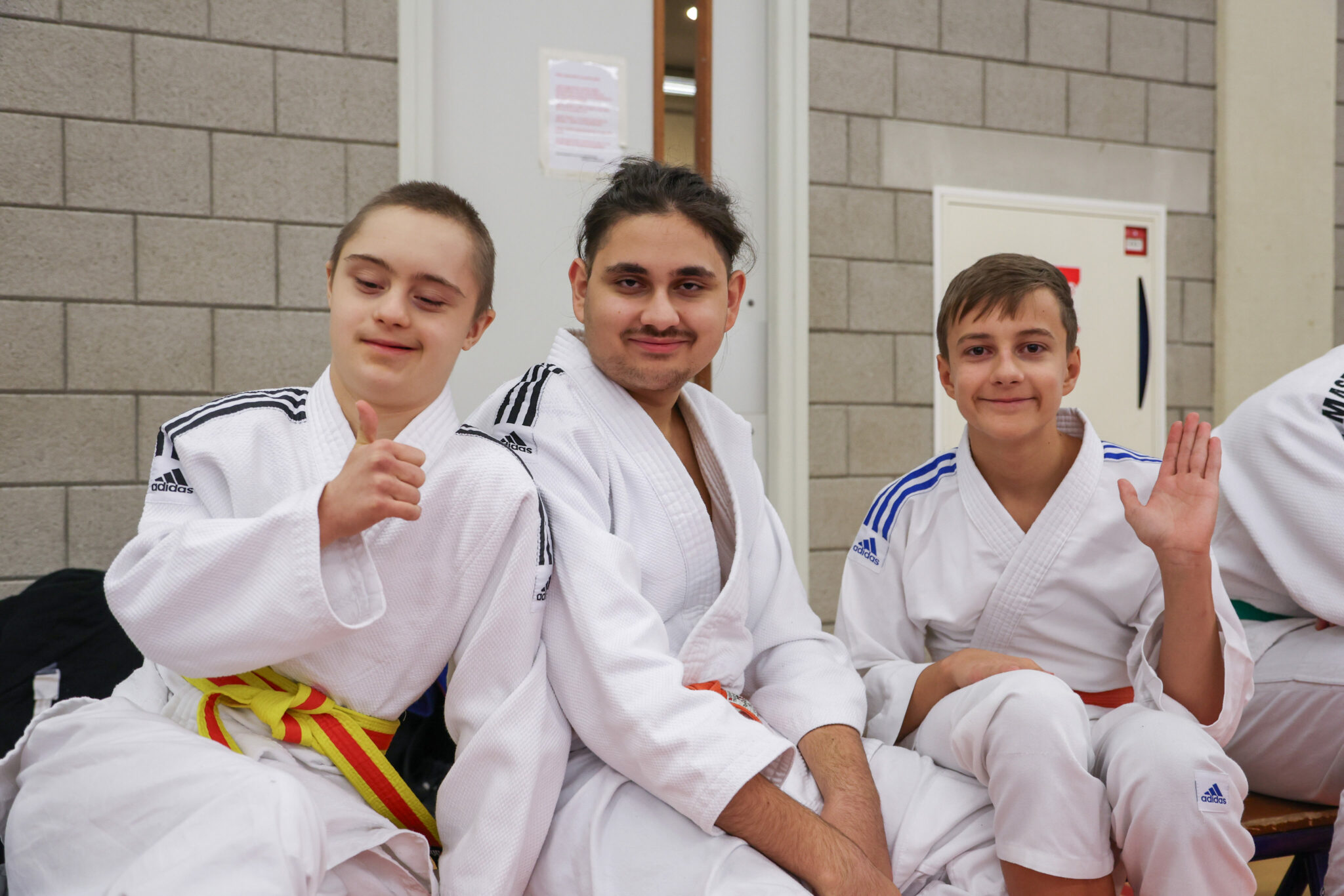The EJU Get Together has officially began with the first section, Divisioning Workshop. During this session, judoka were observed to ensure they are placed into the right division for the weekend. This procedure is necessary to ensure the safety of all, whilst giving an opportunity to everyone to show case their ability to do judo. The workshop was led by Sport Director of the Virtus and Leader of Adaptive Judo of the British Judo Association, Kerry Tansey, who addressed all;
First of all, without you [coaches], this would not be possible, so we really appreciate your time and for all coming here today. The way we do the divisoning is based on your athlete’s abilities, not their disabilities, so I would like all of you to watch and look everybody else to make sure that they are fairly accessed on their judo ability. How we do that, is that you ask your athletes to put different belts on. Level 1 will be wearing a blue belt, Level 2 in white. So then with you watching, we can observe and all work together to make it a great event for the athletes.
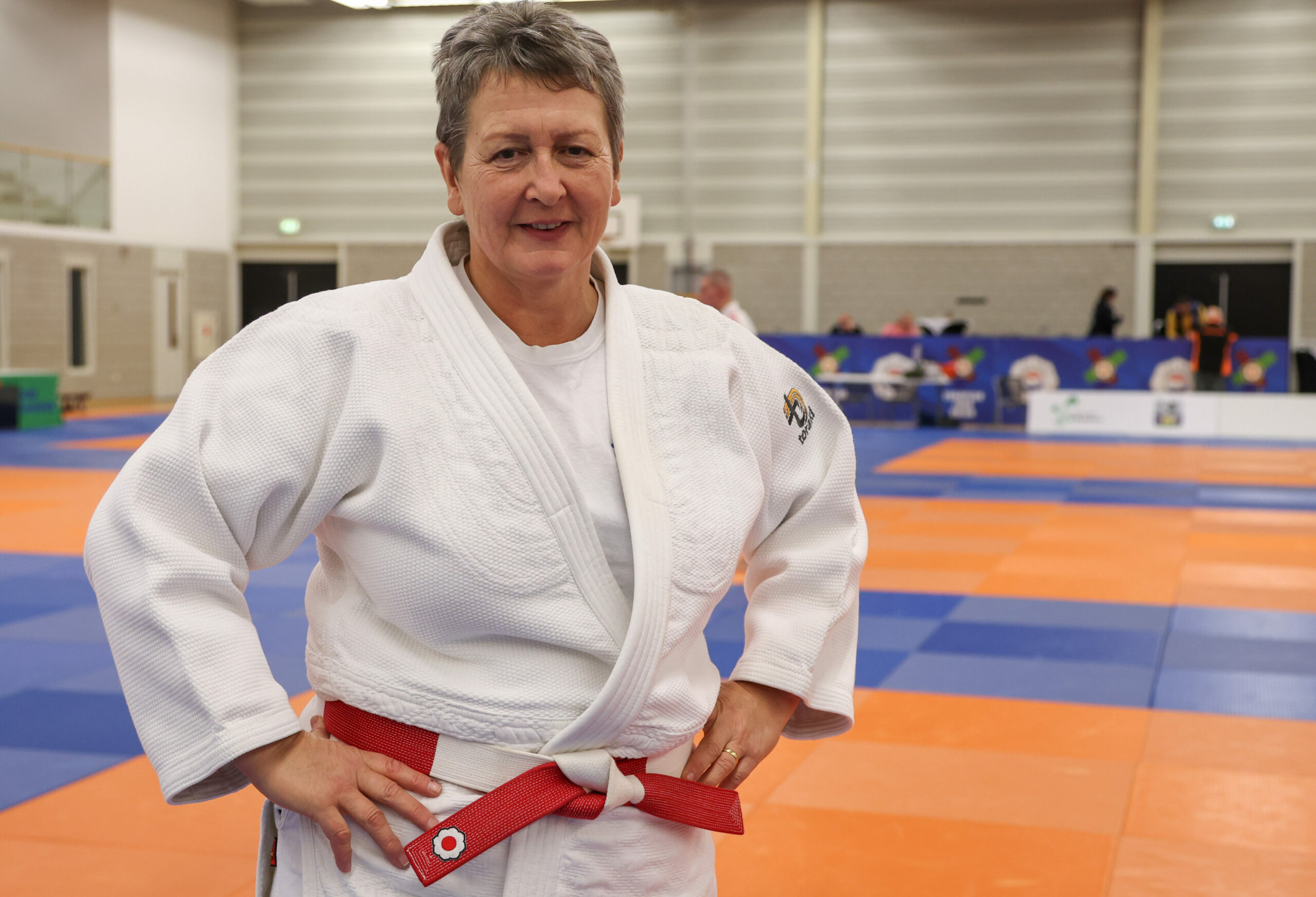
Divisioning & Classifications
The foremost reason for divisioning can be caught in one word: safety. Judo is a safe sport as long as the opponents are more or less equivalent. To ensure all judoka are matched according to their ability, divisioning (via mat-based assessments) are delivered supporting the safety of all participants.
The expertise and knowledge of the coaches, medical professionals and technical competition organisers collaborated to ensure the levels are acceptable for the well-being of the athletes. The Functional Classification System consists of 5 levels and classifies judoka based on insight, power, speed, will to win and Judo capability.
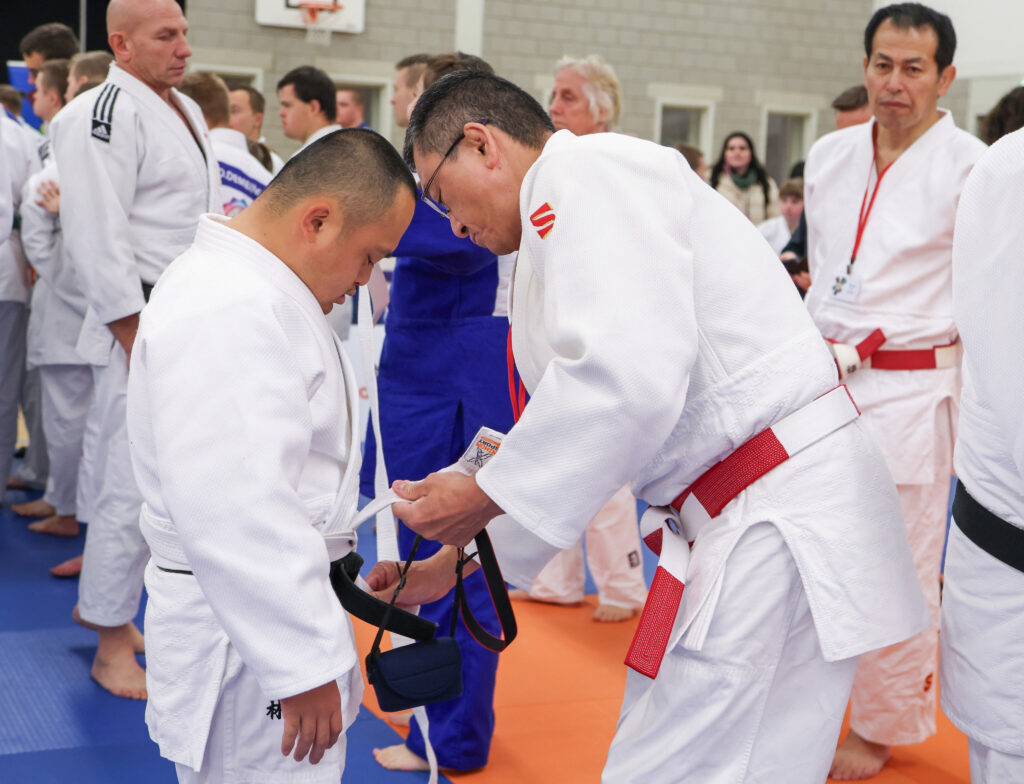
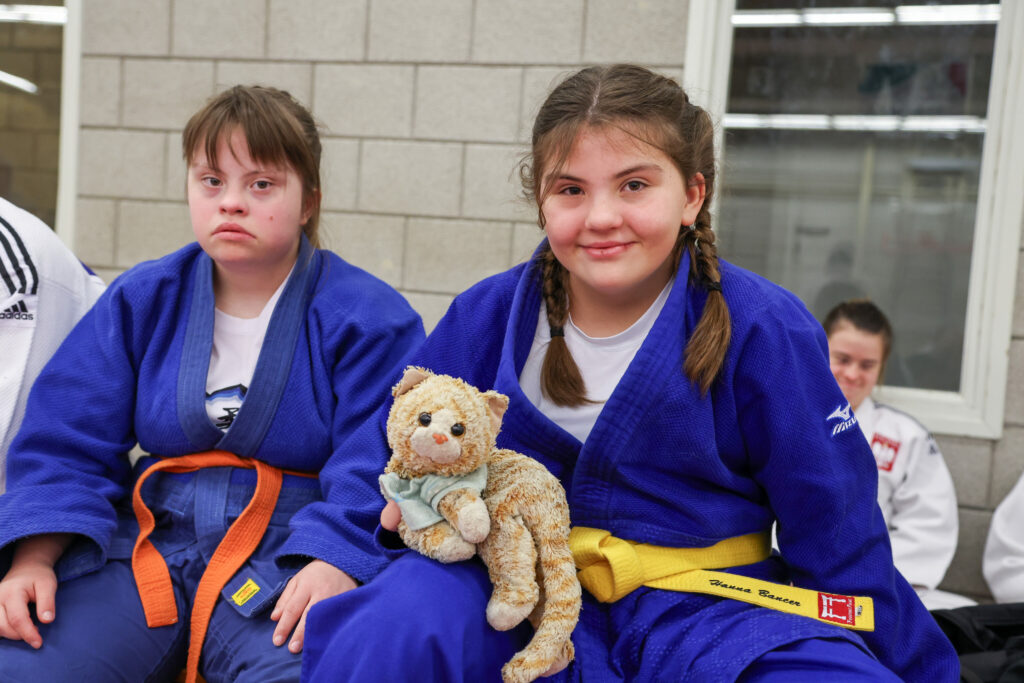
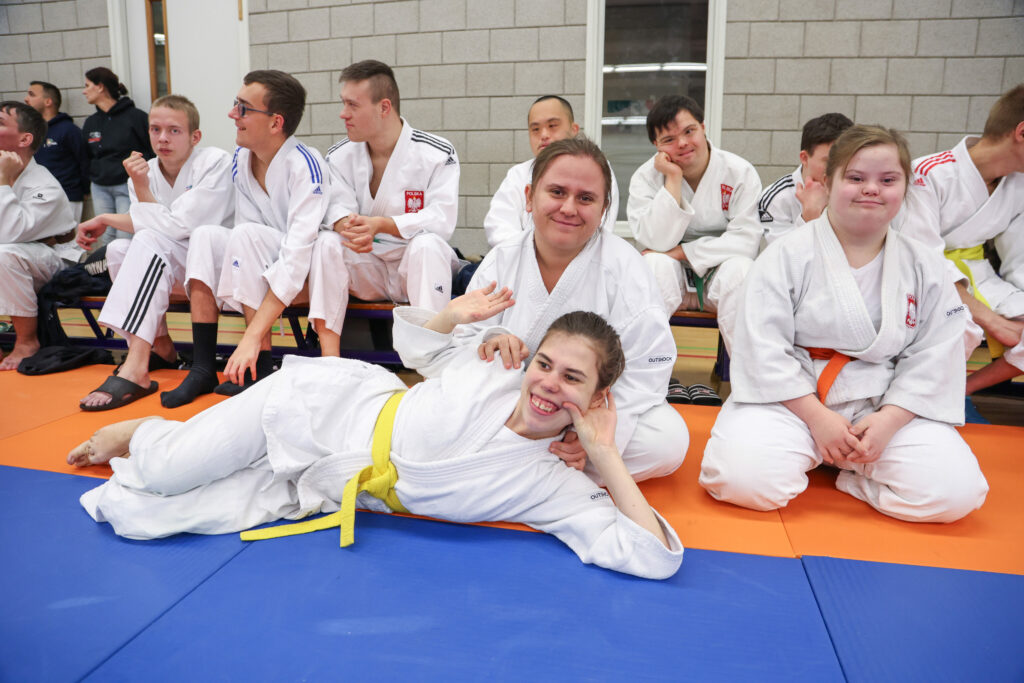
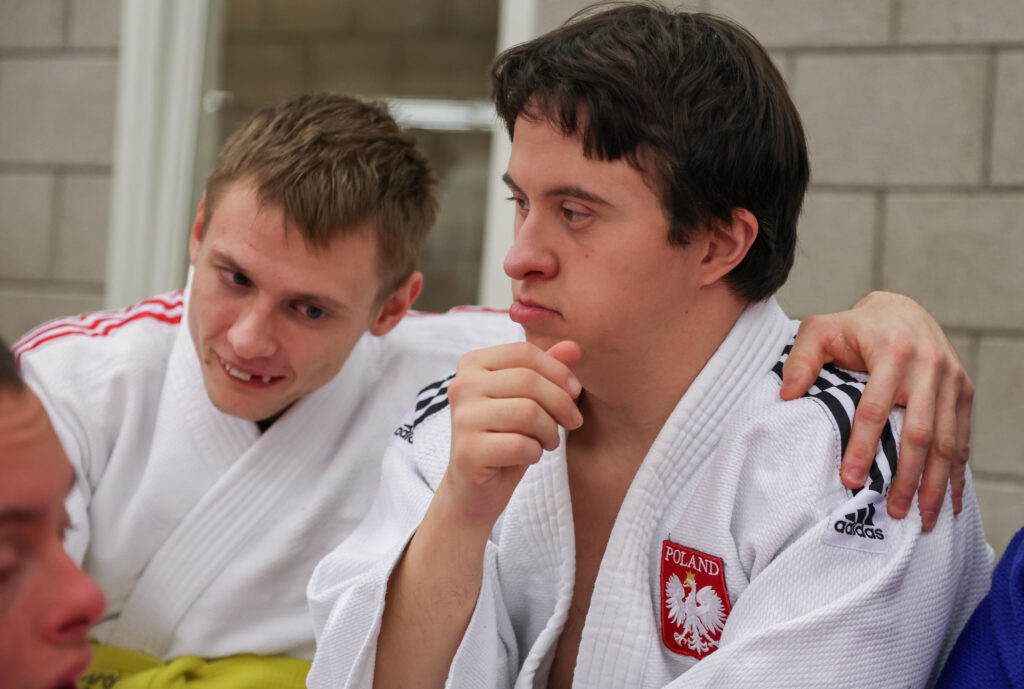
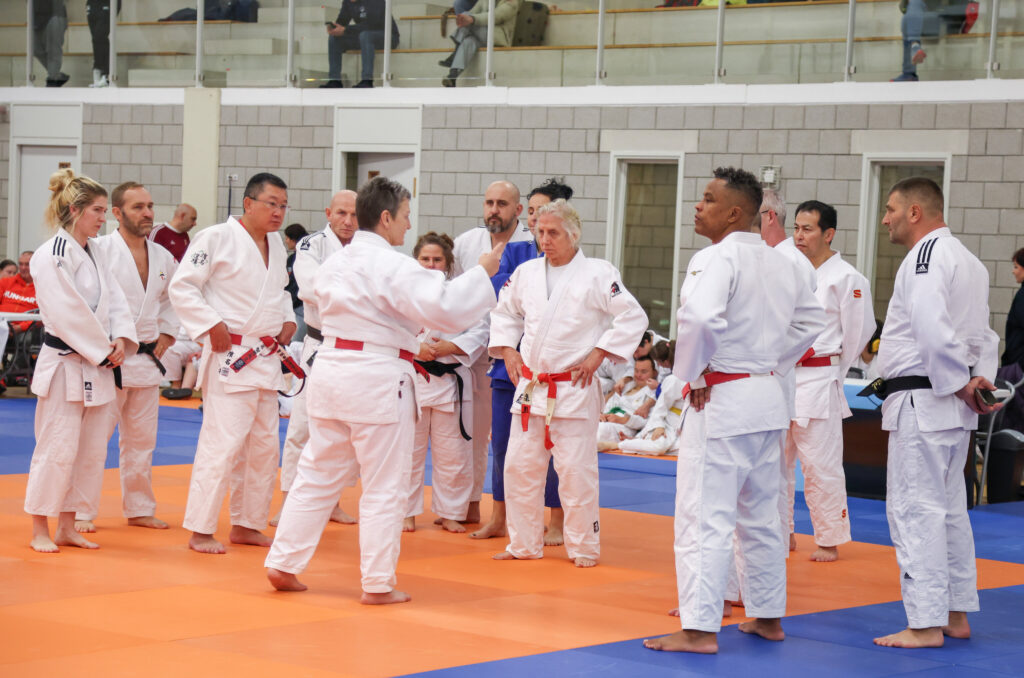

| Level 1 | is a judoka who can perform in a shiai with a mainstream recreational/competitive judoka. This judoka is fast and powerful and has excellent reactivity. He has a strong feeling for Judo and an excellent strategic view. This judoka has a good understanding of the meaning and goal of the competition and is capable of participating mainstream on a regional local events. |
| Level 2 | is a judoka who can perform randori with a mainstream recreational judoka. This judoka understands the competition meaning and goal and is capable of taking part in mainstream local tournaments. This judoka is fast and powerful and has moderate reactivity but is usually late responding to judo situations. He has a good judo feeling but may struggle with processing complex instructions. |
| Level 3 | is a judoka who can perform a playful randori with a mainstream recreational judoka. This judoka is reasonably fast and powerful and has a reasonably developed reactivity. The strategy for this type of judoka often consists of repeating the same technique over and over. This judoka mainly competes in adapted competition with judoka of the same level. |
| Level 4 | is a judoka who can play with another judoka of the same or comparable level. This judoka can take part in adapted training and competitions. He often needs guidance during the competition but understands most of the rules and goals of a competition. Reactivity is suboptimal. Typically, the primary judo technique involves a takedown followed by osae-komi. |
| Level 5 | is a judoka who can play with other judoka of the same level. Judoka of this level takes part in specialised adaptive training or competitions. Contest/training may require adjusting to ensure meaningful activity. Judoka can be very strong and passive, along with slow-responsive minds. Due to safety considerations, this athlete may be restricted to compete only in ne-waza. Constant coaching to take action is necessary. When they end up in osae-komi, the action to escape can take a very long me. |
Divisioning are based on the following;
- Judo skills
- Weight
- Gender
- Age – Under 16 years ideally no more than three years age differences per group
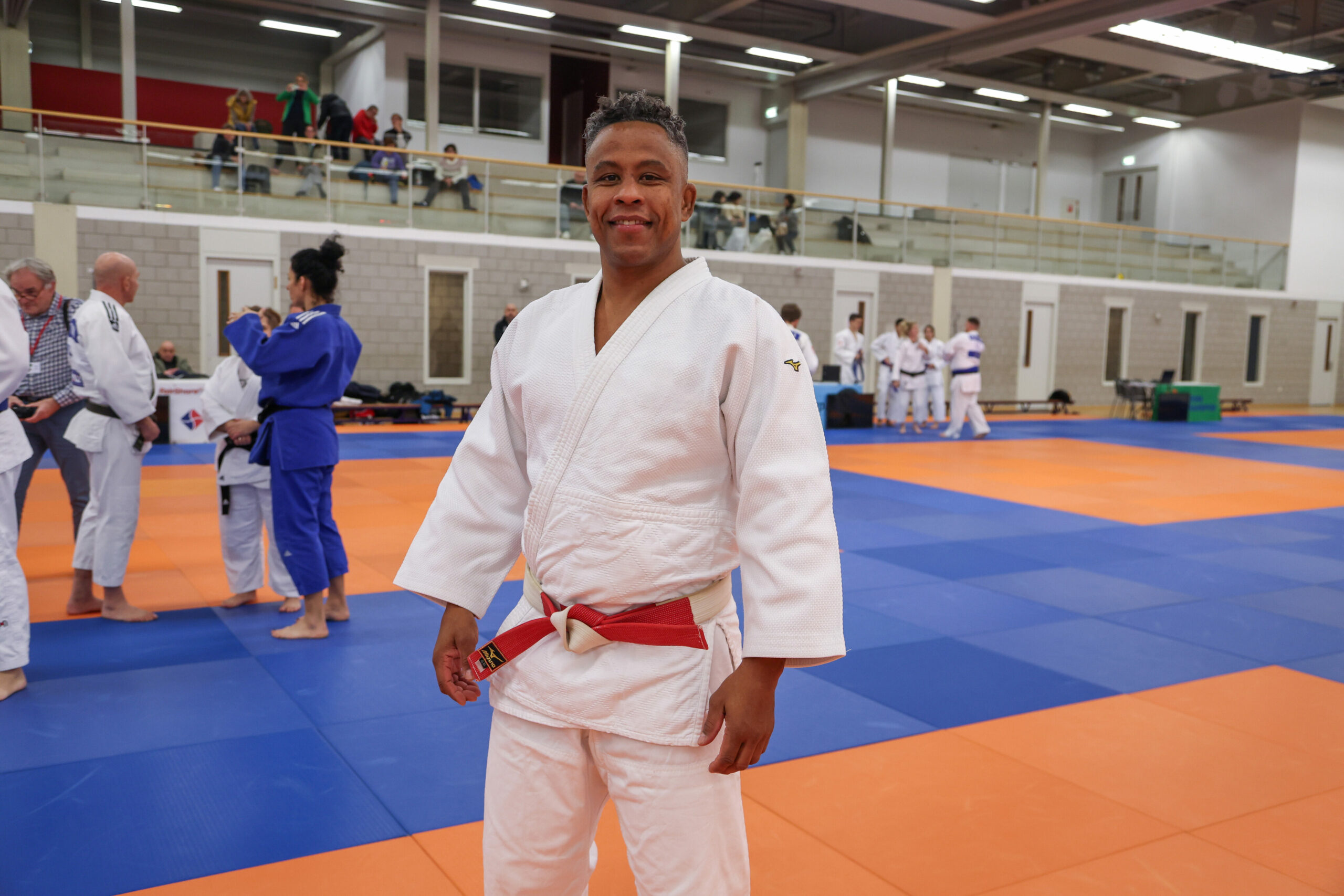
EJU Vice – President and leader of the Education sector, Mr. Sergei ASCHWANDEN also addressed the crowd at the opening of the workshop;
Welcome you all to this first EJU Get Together event. This afternoon, we are going to work on the divisioning. I would like to thank to all the coaches all the organisers and everyone at present. For us, this is a very important event to see how we can work together and how we can develop, to do better for the upcoming years. We have almost 300 competitors from 25 countries on site, this is fantastic. We are also grateful for our doctors for their input. Now, we will begin the divisioning and I know it is going to be hard work but I am absolutely convinced you will do it well and I am certain it will go well with this new unified rules. Once again, thank you for all, it is great pleasure to have you here together and we are excited to begin the tournament tomorrow.
Schedule for Saturday, 25 November
| Time | |
| 9.15 – 9.30 | Opening of the competition |
| 9.30 – 12.00 | The first part of the competition (male born in 2007 and older) |
| 11.00 | Presentation – History of Nihon Dutch Open Shenshu – adapted Judo and VI Judo |
| 12.00 | Medal Ceremony |
| 14.00 – 16.00 | The second part of the competition (male born in 2008 and younger, female and VI competitors) |
| 16.00 | Medal Ceremony |
| 19.00 | Buffet dinner for all participants with DJ (for those who have signed up for dinner in advance) |
For more information on Adaptive Judo rules, please read the following: https://www.eju.net/download-file/?parentId=285482&id=285485
Author: Szandra Szogedi



